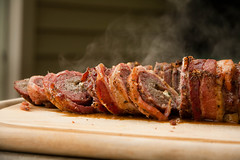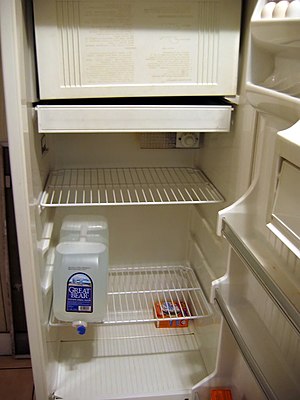Am I the only one who just noticed that it’s Wednesday? The holiday week with the free day is completely screwing me up.
Just to make this a relevant post:
Spend less!
Save more!
Invest!
Wee!
The no-pants guide to spending, saving, and thriving in the real world.
If you don’t know why you are hear, please read about the 21 Day Happiness Training Challenge.
Legions of MMORPGs have graced the internet to do battle against Blizzard’s World of Warcraft, yet no challenger has bested

Blizzard’s massively multiplayer online juggernaut. Huge marketing campaigns and years of development by the makers of games like Star Wars: The Old Republic and Rift have left players less than satisfied, with an initial big burst of player excitement and eventual failure.
As with other game releases, the developers at Sony Online Entertainment have tried to suggest that their game will be “new” and “different.” It’s not difficult to understand why skepticism is high. Every game that has seen release in the past few years has had developers boast the same and has crashed and burned just a month or so after the release.
Players of EverQuest Next will find a game focus that includes some familiar fantasy elements of an MMO game (like elves), but developers have sought to step away from the traditional, linear questing experience and offer some world-building opportunities for players (much like EVE Online). One of the interesting features expected of the game is the ability for players to impact permanent change upon the landscape.
For example, during wartime a player might decide to build a wall somewhere, and he or she can accomplish this and actually have that wall erected as a permanent feature in the game world. Similarly, when players fight one another or monsters, a spell or explosion that creates a hole in the world will remain permanently. One of the developers likened this feature to the idea of putting Minecraft into an MMORPG.
Although absolutely everything in the world can’t be destroyed (certain structures will be permanent), this opportunity to build, create, and destroy represents a jump forward from the same opportunities players have had in games like EVE Online. World of Warcraft has occasionally offered players the opportunity to change the landscape, but not on a regular basis. Such changes have generally been implemented after a reset with all the realms taken offline, after which players would log in and see the changes.
However, the lack of appreciable impact on the environment hasn’t stopped players from flocking to World of Warcraft for nearly a decade, and EverQuest Next will need to bring an amazing player experience to lure away current players as well as retain them. The ebb and flow of Warcraft’s player base often coincides with the new release of another MMORPG, but after a month or so the new game’s servers are ghost towns. It won’t take long to see whether EverQuest Next can compete with World of Warcraft.

I like to party.
Actually, that’s a lie. I’m too introverted to be a partier. More accurately, I like to throw two parties per year. I am also cheap frugal, so I try not to break the bank feeding fifty of my closest friends.
I have two entirely different parties. The first, known as the “Fourth Annual Second Deadly Sin Barbecue of Doom”, is a daytime party with a lot of food. The second is a Halloween party which takes place at night and refreshments are more of the liquid variety. Two different parties, two different strategies to keep them affordable.
For the Halloween party, meat consists entirely of a meat/cheese/cracker tray and a crock-pot full of either sloppy joes or chili. Quick and easy for about $20. For the barbecue, meat is the main attraction. The menu varies a bit from year to year. Last year, we had burgers, brats, hot dogs, a leg of lamb, pulled pork, and a couple of fatties. The year before, we had a turducken, but no fatties. From a frugal standpoint, the only meat mistakes were the turducken and the lamb. Neither are cheap, but both as delicious. The rest of the meat needs to be bought over the months preceding the party, as they go on sale. Ten pounds of beef, 2 dozen brats, 2 dozen hot dogs and a pork roast can be had for a total of about $75, without having to worry about picking out the hooves and hair. Fatties cost less than $5 to make.
Both parties have chips, crackers and a vegetable tray. Chips are usually whatever is on sale or the store brand if it’s cheaper. Depending on our time management, we try to cut the vegetables ourselves, but have resorted to paying more for a pre-made veggie tray in the past. This runs from $15-30.
For kids and adults who don’t drink, I make a 5 gallon jug of Kool-Aid. Cost: About $3. For adults, I provide a few cases of beer. I don’t drink fancy beer, so this runs about $50. For the Halloween party, I throw open my liquor cabinet. Whatever is in there is available for my guests. The rule is “I provide the beer. If you want something specific, bring it yourself.” I have a fairly well-stocked liquor cabinet, but I don’t stock what I don’t like or don’t use. Part of the stock is what guests have left in the past. I don’t drink much and I buy liquor sporadically when I have a whim for something specific, so raiding the leftovers in the liquor cabinet doesn’t register on my party budget.
While it seems like an obvious and easy way to keep costs down, I do not and will not expect my guests to bring anything. I throw a party to showcase either A) my cooking, or B) my Halloween display. I don’t charge admission. I don’t charge for a glass. I throw a party so I can have fun with the people I care about and the people the people I care about care about. I consider it a serious breach of etiquette to ask anybody to bring something. On the other hand, if someone offers, I will not turn it down.
The most important part of either of my parties is fun. All else is secondary. I seem to be successful, since reservations are made for my spare beds a full year in advance. Last Halloween, people came from 3 states.
How much do my mildy-over-the-top parties cost? The barbecue runs about $150-180 plus charcoal and propane. Yes, I use both. I’ll have 2 propane grills, 1 charcoal grill, and a charcoal smoker running all day. The Halloween party costs $80-100 for the basics. The brain dip costs another $20 and there’s always at least another $50 in stuff that seems like a good idea to serve.
Update: This post has been included in the Festival of Frugality.

After months of research and planning I recently had a successful garage. Here’s my how-to yard sale manual.
Step 1: Preparation. You can never be too prepared. I detail advertising, setup, planning and more.
Step 1.5: Marketing. Here is the text of the ads I placed.
Step 2: Management. Pricing, haggling, staffing, and other “Day Of” issues.
Step 3: Wrap-up. It’s done. What now?
Finally, we’ve got a Page of Tips. This is sure to grow over time.

We recently had our annual barbecue. (For the purists, I am Minnesotan. Barbecue means “cooked over fire”.) Due to massive scheduling conflicts, it was a bit smaller than normal; only about 20 people came. At least 10 other people RSVP-ed that they were going to make it, but didn’t. Grr.
Naturally, we had food for everyone said they would be there and enough for half of the people who didn’t say anything, since Minnesotans don’t RSVP well. That translates to a lot of leftovers. No problem. After all, leftover ribs are hardly a punishment.
Sunday morning, we woke up to find that our refrigerator was happier at room temperature than the standard “cold”. We didn’t know it at the time, but the defrost unit was borked, so the cold air couldn’t circulate from the freezer to the refrigerator. Bye-bye leftovers. Hello, Mr. Repairman. We needed an excuse to clean out the fridge, anyway, but not at the price of my beautifully seared meat! (Sadness strikes.)
Monday evening, the repairman came out, worked for 2 hours and left a functional refrigerator and a $240 invoice in his wake. Thankfully, we are on the appliance repair plan through the gas company. We pay $26.40 per month to cover repairs to our range, water heater, furnace, drier, sewer main, and refrigerator. The first four items are standard, the final two are options that cost extra.
We originally got on the plan for the sewer main. We had a tree whose roots grew into the main and clogged it every year. A backed-up sewer main is a crappy way to wake up. Getting that snaked to the street cost $200 per year. At the time, without the refrigerator, the plan cost about $12 per month. One $200 call-out more than paid for the plan for the year. That was easy math. Now, our 20 year old refrigerator has been repaired twice in the last year, giving us $500 worth of repairs for $316.80. I would like to take this time to thank all of the people with reliable appliances for subsidizing my repairs.
My furnace, drier, and range are all reasonably new and shouldn’t need repairs any time soon, but the refrigerator and sewer main have paid for the plan themselves, several times over.
Should you get a similar plan? If your covered appliances are more than 4-5 years old, I would consider it. If they are more than 10 years old, I wouldn’t hesitate at all. Repairing quality appliances is cheaper than replacing them, especially when the repair cost is paid monthly and subsidized.
Do you use a service plan?